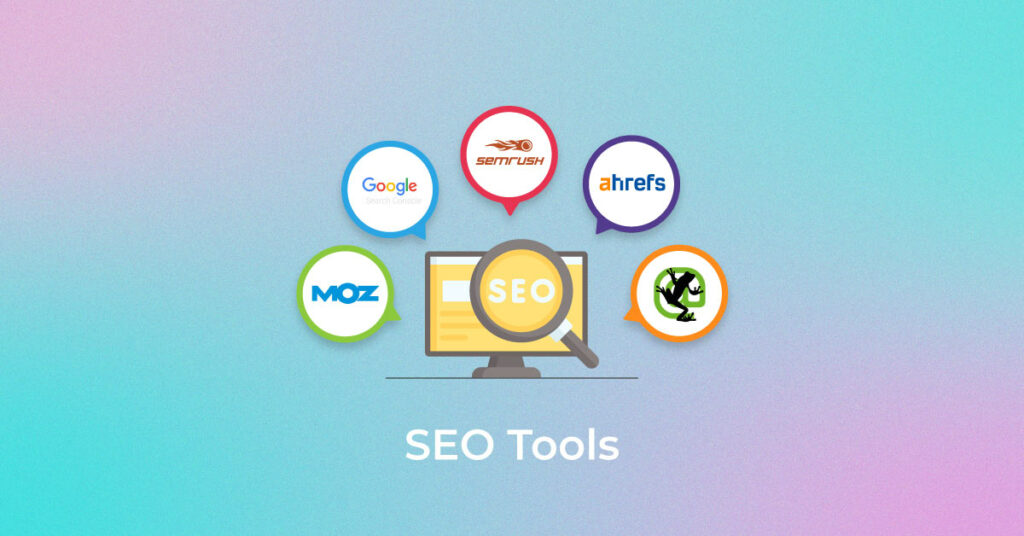Audit Insights: Deep-Dive Analysis for Unveiling the True Potential of SEO
Wiki Article
SEO Vs. SEM: Recognizing the Trick Distinctions
Worldwide of digital marketing, two vital methods that often come up are SEO and SEM. While they may sound comparable, they in fact offer various functions and have unique strategies. SEARCH ENGINE OPTIMIZATION, which means Browse Engine Optimization, concentrates on boosting a web site's exposure and natural ranking on online search engine results pages. On the other hand, SEM, or Look Engine Advertising and marketing, includes paid advertising and marketing to boost a web site's presence on search engines. Understanding the vital differences in between search engine optimization and SEM is important for organizations seeking to enhance their on the internet presence and drive traffic to their internet sites. In this post, we will certainly look into the meanings, goals, and crucial components of both search engine optimization and SEM, dropping light on their distinct features and benefits.
Interpretation of SEO
SEARCH ENGINE OPTIMIZATION, or Seo, describes the technique of enhancing web sites to enhance their exposure and rankings on online search engine results pages (SERPs) It involves numerous strategies and methods targeted at boosting organic, or non-paid, web traffic to a web site. The supreme objective of search engine optimization is to improve a website's on-line presence and bring in more targeted site visitors.One of the key facets of SEO is keyword optimization (https://starsgazette.com/news/linkdaddy-announces-agency-backlink-local-business-directory-listings-service/458323). This includes carrying out thorough research to recognize pertinent key phrases that individuals are likely to look for when seeking info or items connected to a particular internet site. By incorporating these keywords purposefully into the internet site's material, meta tags, and URLs, search engine optimization aims to boost the site's importance and ranking for those particular search terms
An additional essential variable in SEO is on-page optimization. This involves maximizing different components on a web site, such as title tags, headings, images, and interior links, to make them even more search engine-friendly (seo). By making sure that these elements are correctly structured and appropriate to the internet site's content, SEO aids online search engine recognize the context and significance of the website
Additionally, SEO likewise consists of off-page optimization methods, such as web link structure. This involves acquiring high-grade backlinks from various other reliable sites, which suggests to internet search engine that the site is credible and authoritative. By constructing a solid network of back links, SEO boosts a site's integrity and increases its chances of ranking higher in search results page.
Definition of SEM
SEM, or Internet Search Engine Advertising, is an advertising method that entails promoting sites and enhancing their exposure with paid marketing on internet search engine results web pages (SERPs) Unlike search engine optimization, which concentrates on maximizing internet sites to improve organic search rankings, SEM makes use of paid advertising and marketing to drive website traffic to an internet site.One of the key components of SEM is pay-per-click (PAY PER CLICK) advertising and marketing. With pay per click, marketers quote on keywords that pertain to their target market. When an individual look for those key phrases, the ads appear at the leading or side of the search engine result. Advertisers only pay when a user clicks their advertisement, thus the term "pay-per-click."

SEM likewise includes various other forms of paid advertising and marketing, such as screen ads, remarketing advertisements, and shopping advertisements. Show advertisements are banners or aesthetic advertisements that appear on sites within the Google Display Network. Remarketing advertisements target users that have formerly seen an internet site, serving them advertisements as they surf various other sites. Purchasing ads, on the various other hand, promote particular items and display pertinent information, such as rate and schedule.
Objectives of Search Engine Optimization and SEM
The purposes of both search engine optimization (SEARCH ENGINE OPTIMIZATION) and online search engine marketing (SEM) rotate around raising a site's exposure and driving targeted website traffic. The approaches and approaches utilized by each differ dramatically.The main goal of SEO is to improve an internet site's organic search ranking on online search engine results pages (SERPs) This is accomplished by maximizing various elements on the site, such as material, meta tags, and site structure, to make it more enticing and appropriate to online search engine. By doing so, SEO intends to draw in more organic traffic from users actively looking for relevant key words or subjects.
On the other hand, SEM focuses on increasing a website's visibility with paid advertising and marketing on internet search engine. The key goal of SEM is to drive targeted web traffic to a site by bidding process on key phrases and showing ads in search engine results. This technique enables companies to reach a wider target market swiftly and effectively.

Secret Parts of SEO
To efficiently execute SEO, it is crucial to understand the key components that contribute to improving a website's organic search ranking. These components can be broadly classified right into on-page aspects and off-page aspects.On-page aspects refer to the aspects that are directly existing on an internet site and can be enhanced for much better online search engine exposure. This includes the website's web content, key words usage, meta tags, link framework, page titles, and headings. By optimizing these aspects, online search engine Source can better recognize the importance and context of the web site's content, leading to higher positions.
Off-page aspects, on the other hand, emphasis on external signals that influence an internet site's authority and reputation. This includes backlinks from other trustworthy internet sites, social networks signals, and online states (https://markets.financialcontent.com/pennwell.hydroworld/news/article/marketersmedia-2023-12-3-linkdaddy-announces-agency-backlink-local-business-directory-listings-service). The even more premium and appropriate back links a website has, the better its chances of ranking higher in search engine results web pages
In addition, customer experience is a crucial element of SEO. seo marketing. Internet search engine focus on web sites that provide a positive customer experience, consisting of rapid packing times, mobile-friendliness, and easy navigation
Trick Parts of SEM
In comparison to search engine optimization, SEM incorporates an unique set of vital parts that concentrate on paid advertising and driving prompt exposure in online search engine outcomes. These elements include internet search engine marketing, also understood as pay-per-click (PPC) marketing, keyword research, advertisement development, and project monitoring.Browse engine advertising is an essential part of SEM. When those search phrases are searched, it entails bidding on keyword phrases pertinent to your company and developing text or screen advertisements that will appear in search engine results. With internet search engine advertising, you can target certain demographics, locations, and even time of day to reach your desired target market.
Keyword study is another crucial part of SEM. It involves determining the search phrases that your target audience is using to browse for services or products comparable to your own. By performing comprehensive keyword research study, you can maximize your advertisements and guarantee they are revealed to the right people at the best time.
Advertisement production is the procedure of creating convincing and compelling ads that will lure customers to click them. Well-crafted advertisements have a solid call-to-action, pertinent messaging, and a clear worth suggestion.
Lastly, campaign management involves monitoring and optimizing your SEM campaigns to guarantee they are performing effectively. This includes monitoring metrics such as click-through prices, conversion prices, and return on financial investment (ROI) to make data-driven choices and accomplish the finest results.
Final Thought
Finally, search engine optimization and SEM are two unique methods in electronic marketing. SEO concentrates on enhancing websites to improve organic search rankings, while SEM includes paid advertising and marketing to increase visibility on online search engine results pages. Both methods have their very own purposes and vital components that add to their efficiency. Comprehending the distinctions in between search engine optimization and SEM is critical for businesses to develop a comprehensive online marketing method.SEARCH ENGINE OPTIMIZATION, which stands for Look Engine Optimization, concentrates on enhancing a website's presence and natural ranking on search engine results pages. On the various other hand, SEM, or Look Engine Advertising, involves paid advertising to raise a site's presence on search engines (Linkdaddy).SEARCH ENGINE OPTIMIZATION, or Browse Engine Optimization, refers to the method of optimizing websites to boost their exposure and rankings on search engine results web pages (SERPs)The primary goal of Search engine optimization is to enhance a website's natural search ranking on search engine results web pages (SERPs) SEO focuses on optimizing web sites to enhance organic search rankings, while SEM involves paid advertising and marketing to raise exposure on search engine results pages
Report this wiki page